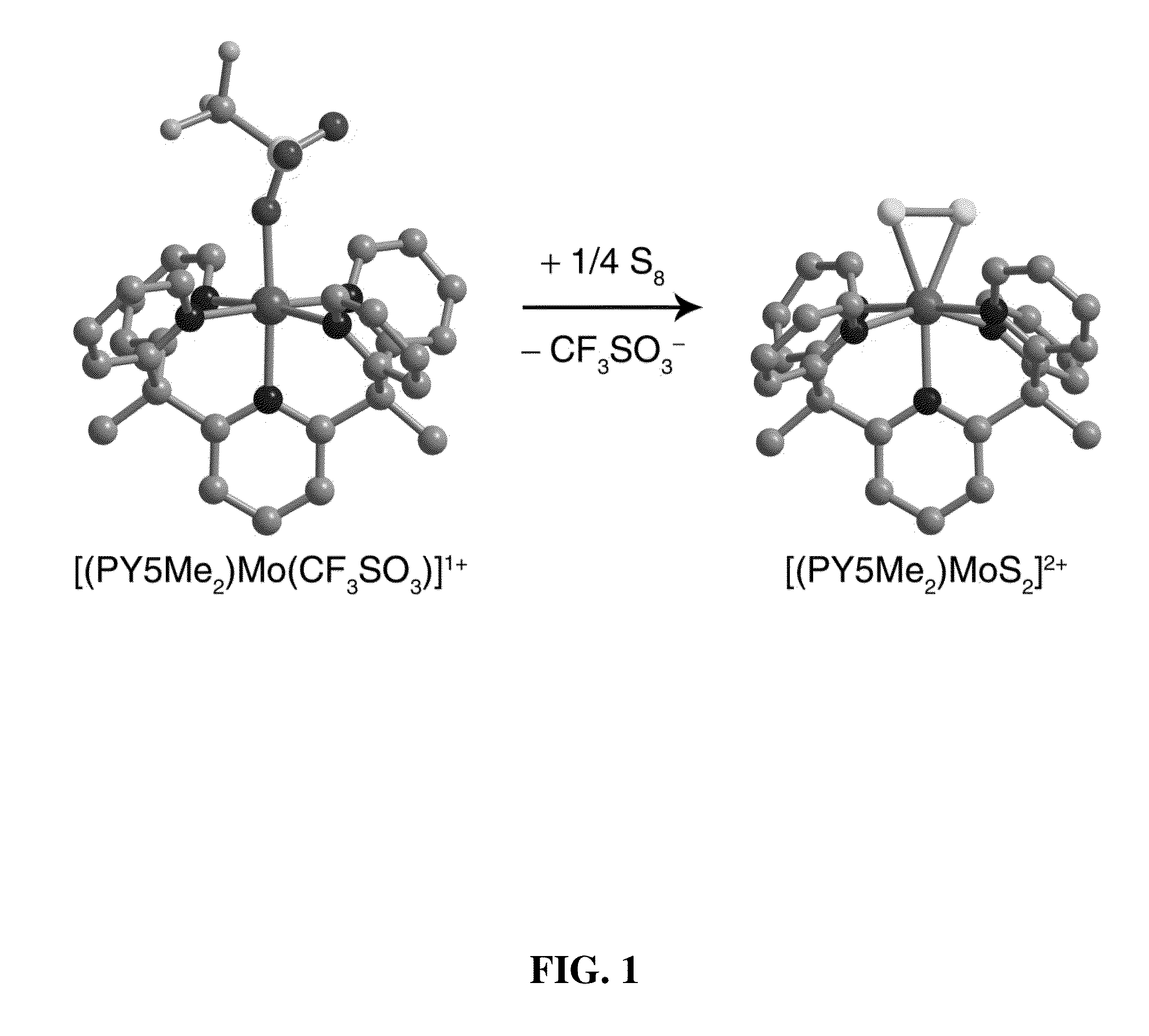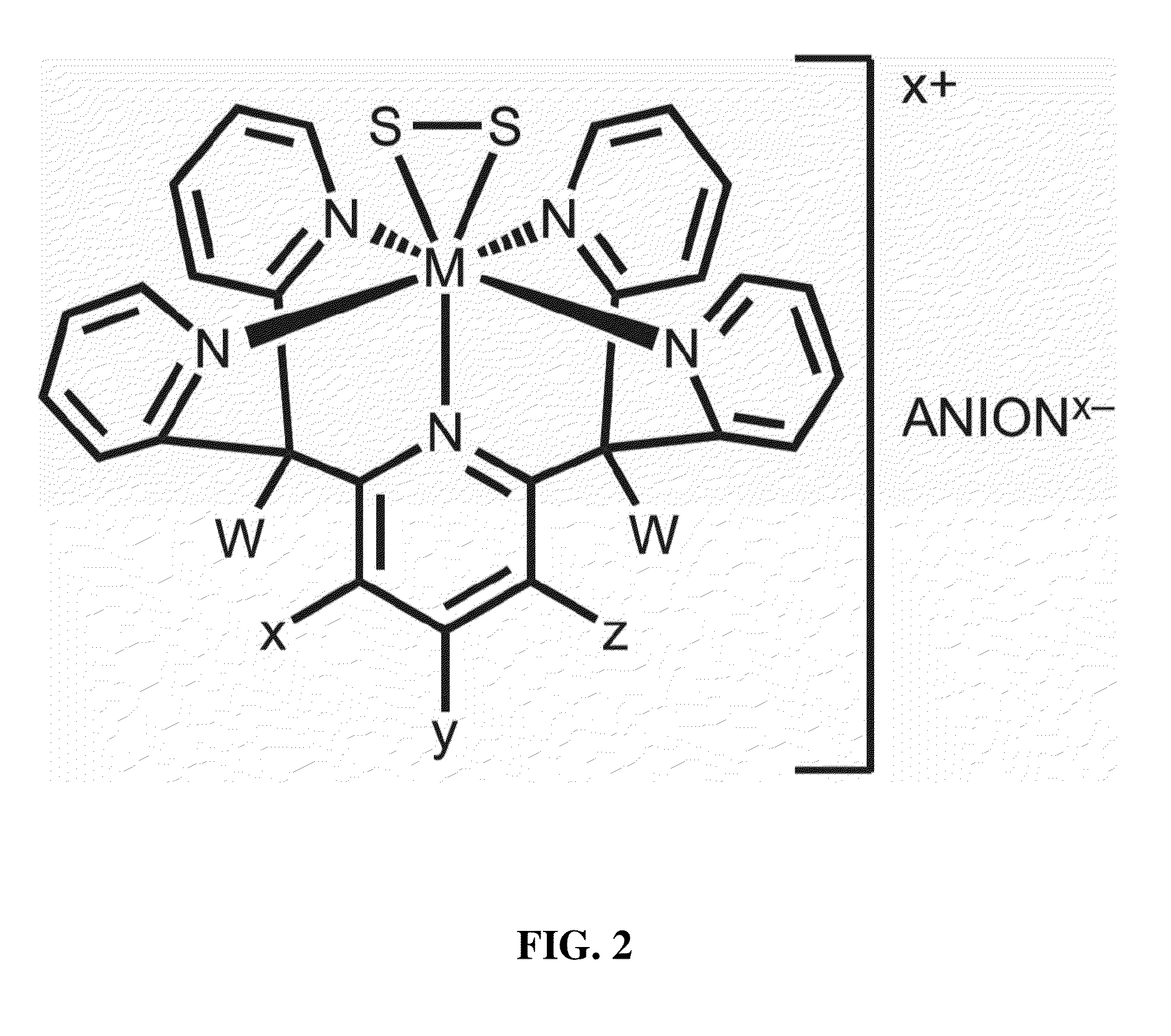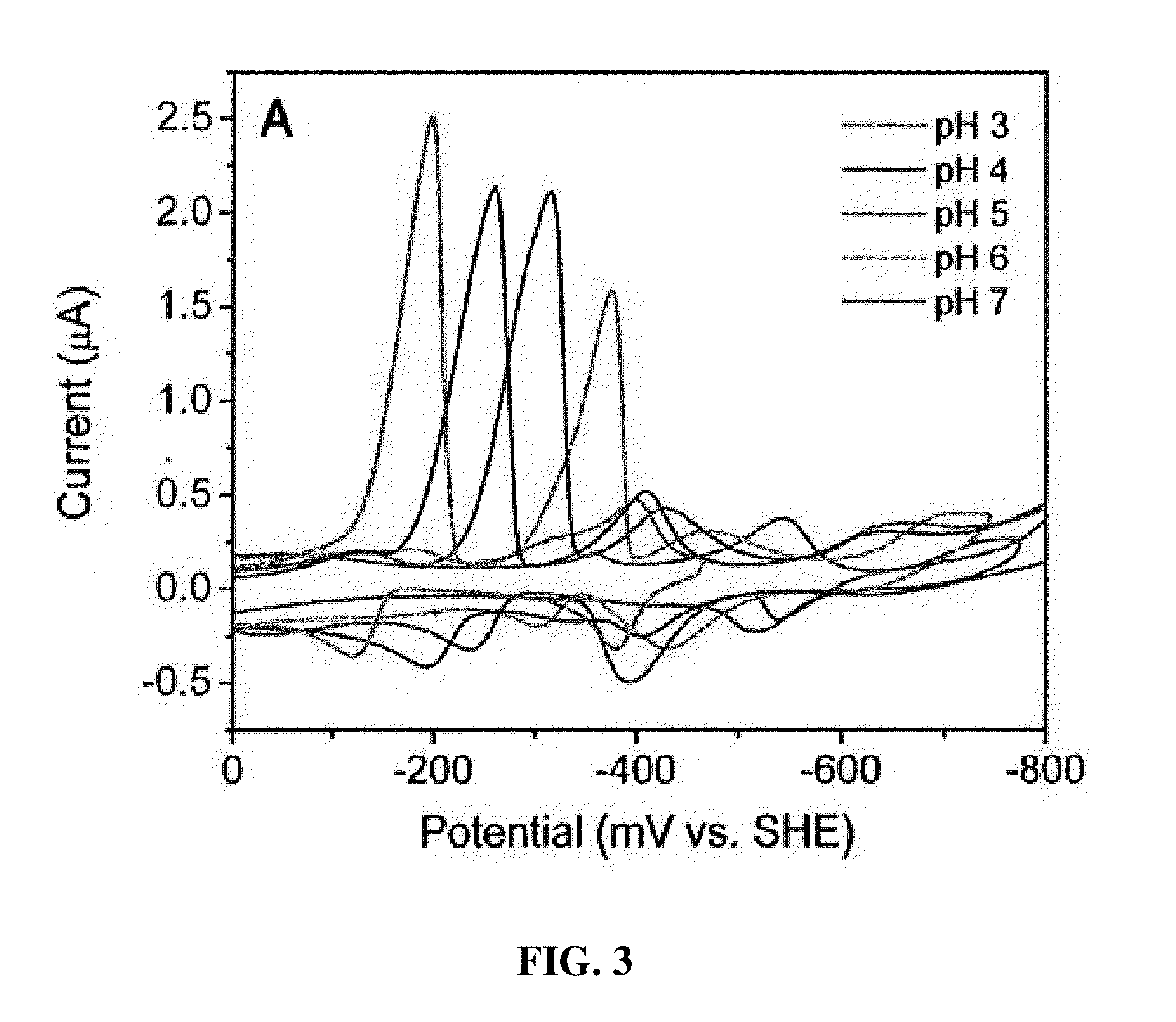Molecular molybdenum persulfide and related catalysts for generating hydrogen from water
a technology of molybdenum persulfide and hydrogen from water, which is applied in the field of new composition of matter, can solve the problems of high cost, unsustainable environmental protection, and high cost of process
- Summary
- Abstract
- Description
- Claims
- Application Information
AI Technical Summary
Benefits of technology
Problems solved by technology
Method used
Image
Examples
Embodiment Construction
[0028]Recent studies have suggested the formation of disulfide linkages or triangular MoS2 units which decorate the edges of MoS2 bulk materials are responsible for the catalytic activity of these materials, with the bulk of the material thus being relatively inert. By way of one embodiment of this invention, it has been possible to create a discrete molecular molybdenum persulfide complex that mimics the triangular MoS2 active edge sites of molbydenite, and yet provides high activity at low pH for the generation of hydrogen from water.
[0029]As with the MO complex described in the related PCT case, the metal persulfide compositions of this invention are similarly represented by the general formula [(PY5W2)MS2]2+ (see FIG. 2), where PY stands for pyridine and PY5 indicates the presence of five pyridyl rings. The PY5W2 moiety of the composition can be further expressed by the formula (NC5XYZ)(NC5H4)4C2W2, where W, X, Y, and Z are selected from the group comprising H, R, a halide, CF3,...
PUM
| Property | Measurement | Unit |
|---|---|---|
| pH | aaaaa | aaaaa |
| surface area | aaaaa | aaaaa |
| diameter | aaaaa | aaaaa |
Abstract
Description
Claims
Application Information
 Login to View More
Login to View More - R&D
- Intellectual Property
- Life Sciences
- Materials
- Tech Scout
- Unparalleled Data Quality
- Higher Quality Content
- 60% Fewer Hallucinations
Browse by: Latest US Patents, China's latest patents, Technical Efficacy Thesaurus, Application Domain, Technology Topic, Popular Technical Reports.
© 2025 PatSnap. All rights reserved.Legal|Privacy policy|Modern Slavery Act Transparency Statement|Sitemap|About US| Contact US: help@patsnap.com



